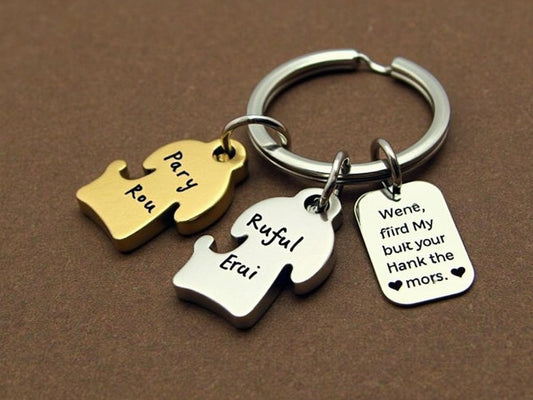AI-powered pet facial recognition technology is revolutionizing the way we identify and protect our beloved pets beyond traditional microchipping methods. With an alarming 10 million pets disappearing annually in the U.S. alone and microchips achieving less than 50% reunion rates, these innovative AI identification systems offer a powerful complementary approach to keeping our furry friends safe.
Key Takeaways
- AI facial recognition serves as a non-invasive alternative to microchips, dramatically increasing the chances of reuniting with lost pets
- Technologies like Petnow can scan unique nose prints and facial features to identify individual pets with remarkable accuracy
- Petco Love Lost has facilitated over 100,000 reunions using AI recognition platforms
- The technology works through phone cameras, making it accessible to virtually anyone with a smartphone
- Both microchips and AI recognition provide complementary safety nets, giving pets multiple paths home
Understanding the Pet Loss Crisis
The statistics are heartbreaking—approximately 10 million pets go missing in the United States every year. Despite widespread adoption of microchipping, less than half of these animals ever find their way back home. This gap represents millions of heartbroken families and confused pets who may never reunite. Traditional identification methods clearly need reinforcement, and that's precisely where AI facial recognition technology enters the picture.
While microchips have been the gold standard for pet identification for decades, they come with limitations. They can migrate within the body, malfunction, or go unscanned if the finder doesn't take the pet to a facility with a scanner. AI facial recognition bypasses these issues entirely by utilizing something pets always carry with them—their unique facial features.

How AI Pet Recognition Works
The technology behind pet facial recognition is both sophisticated and surprisingly accessible. Platforms like Petnow have developed algorithms that can identify unique nose print patterns in dogs—similar to human fingerprints—and distinctive facial features in cats. These biometric markers are as unique as human fingerprints but require no invasive procedures to document.
The technology translates these visual markers into digital signatures that can be matched against databases of registered pets. Beyond simple identification, advanced AI systems can even analyze facial features to provide insights into breed patterns and behavioral traits. This added layer of information can help connect lost companions with their families by matching not just appearance but temperament descriptions.
What makes this technology truly revolutionary is its accessibility. Unlike microchip scanners that require specialized equipment, AI pet recognition works through ordinary smartphone cameras. Anyone who finds a lost pet can potentially help identify it with just a few taps on their phone screen.
A Complementary Approach to Pet Safety
It's important to understand that AI facial recognition isn't meant to replace microchips—rather, it creates a powerful dual-layer protection system. Microchips excel as permanent physical identifiers that can't be lost or removed, while facial recognition provides immediate, accessible identification that doesn't require special scanning equipment.
The complementary nature of these technologies creates multiple paths home for lost pets. If a good Samaritan finds your pet but doesn't have access to a microchip scanner, they can still use their smartphone to check facial recognition databases. Similarly, if your pet's appearance changes due to injury or aging, the microchip serves as a backup identification method.
This layered approach to pet identification represents a significant advancement in how we protect our animal companions. By embracing both traditional and cutting-edge technologies, pet owners can drastically improve their chances of a reunion should their pet ever go missing.
Technical Innovations Driving the Technology
The effectiveness of pet facial recognition hinges on sophisticated algorithms like ArcFace, which continue to evolve with each technological advancement. These systems rely on vast datasets of animal faces to improve accuracy across breeds, colors, and species variations. The more pets registered in these systems, the more effective they become at matching and identification.
A key advantage of this technology is its non-invasive nature. Unlike microchipping, which requires a veterinary procedure, facial recognition causes no stress or discomfort to the animal. This aligns perfectly with growing consumer demand for welfare-focused pet technologies that prioritize comfort and well-being.
The algorithms have become remarkably sophisticated, capable of recognizing pets even as they age or if their appearance changes slightly due to weight fluctuations or grooming differences. This adaptive capability makes the technology particularly valuable for protecting your pet throughout its entire life.
Practical Applications for Pet Owners
Getting started with pet facial recognition is surprisingly simple. Apps like Petnow allow you to create a digital profile for your pet using just your smartphone camera. The process typically involves taking several clear photos of your pet's face from different angles to capture their unique features accurately.
These digital profiles are then stored in databases that can be searched when a lost pet is found. The power of these platforms comes from their network effect—the more users who register their pets and actively use the platform, the more effective it becomes as a community safety net.
Beyond lost pet identification, these platforms often offer additional features such as:
- Digital pet health records and vaccination tracking
- Behavior and mood analysis based on facial expressions
- Breed identification for mixed-breed pets
- Community alerts when a pet goes missing in your area
- Custom options like Supetmon's unique custom Pokémon gifts for pet lovers who want to celebrate their pet's personality
These features transform what might otherwise be a single-purpose emergency tool into a comprehensive pet management platform with everyday utility.
Tips for Maximizing AI Recognition Effectiveness
To get the most out of pet facial recognition technology, I recommend these practical strategies:
First, provide multiple quality photographs from different angles and in various lighting conditions. This helps the AI build a more robust profile of your pet's unique features. Include close-up shots of distinctive markings or features that make your pet easily identifiable.
When registering mixed-breed pets, include any breed information you know to help narrow potential matches. The AI systems often incorporate breed-specific facial structure information that can improve matching accuracy when the system knows what breeds to reference.
Keep your pet's profile updated as they age or if their appearance changes significantly due to weight changes, injuries, or medical conditions. Just as you might update your phone's security features, regularly refreshing your pet's digital identity ensures the most accurate matching.
Finally, engage with the community aspects of these platforms. The more people actively using and monitoring these networks, the faster lost pets can be identified and returned home. Consider it a neighborhood watch for our furry friends.
The Future of Pet Identification Technology
The potential for AI pet facial recognition extends far beyond simple identification. As these systems collect more data and their algorithms become more sophisticated, we're likely to see exciting new applications emerge.
Health monitoring represents one of the most promising frontier areas. By analyzing subtle changes in facial features and expressions over time, AI systems may soon be able to detect early signs of pain or illness before they become obvious to pet owners. This predictive capability could revolutionize preventative veterinary care.
Personality assessment is another developing application. Research increasingly suggests connections between facial structure and behavioral tendencies in animals. Advanced AI systems might help match pets with ideal adoption homes based on both appearance and personality compatibility, potentially reducing return rates at shelters.
As these technologies mature, they may eventually integrate with other smart home systems to create comprehensive pet care ecosystems. Imagine a system that not only helps identify your pet if they're lost but also monitors their behavior patterns and adjusts your home environment accordingly.
Taking Action: Protecting Your Pets Today
If you're ready to enhance your pet's safety with facial recognition technology, here are some concrete steps to take:
Download and install one of the major pet recognition apps like Petnow or register with Petco Love Lost. Create a comprehensive profile with high-quality photos and detailed information about your pet's appearance, behavior, and medical needs.
Submit clear, well-lit photographs to adoption networks and pet databases, even if your pet isn't currently lost. This proactive approach ensures your pet's information is already in the system should they ever go missing.
Consider advocating for breed-specific AI training by sharing photos of purebred pets to improve the system's recognition accuracy across different breeds. This is particularly valuable for uncommon goods ideas for Pokemon fans who might appreciate the technology integration with their pet care routines.
Finally, discuss non-invasive identification options with your veterinarian at your next visit. Many animal hospitals are beginning to incorporate these technologies into their standard protocols, and your interest can help accelerate adoption.
By combining traditional safety measures like microchips with cutting-edge AI facial recognition, you're creating the strongest possible safety net for your beloved companion. This layered protection approach represents the future of responsible pet ownership—embracing both proven methods and innovative technologies to keep our furry family members secure.
Sources: Petnow: "" Petco Love Lost: "" Face++: ""




